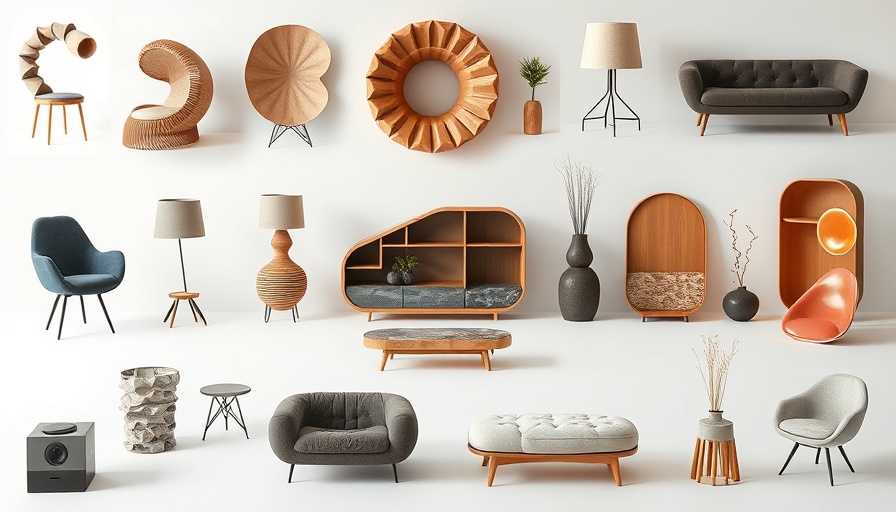
Seeing Beyond Waste: The Future of Sustainable Design in Art Fairs
The Unique Design X fair in Mexico City has set a precedent for sustainability at art events. In contrast to traditional art fairs, which often generate significant waste, founders like Morgan Morris Sans are revolutionizing the way exhibitions are structured. The innovative use of reclaimed materials such as timber, flooring, and curtains from prior editions signifies a shift towards environmental consciousness. With installations designed to engage the senses, this collaborative event blends art with function, creating spaces that feel more like sanctuary than exhibition hall.
A Break from Tradition: Redefining the Art Experience
Unique Design X actively seeks to challenge the conventions that typically define art fairs. Gone are the sterile, white-walled galleries of the past. Instead, the exhibition promotes a productive social landscape with low lighting and scent diffusion that stimulates both social engagement and tranquility. As attendees navigate through the fair, the spatial dynamics hint at a more holistic approach to design—one that resonates with the needs of modern remote workers who juggle aesthetics with functionality in their workspace.
The Role of Scent in Creating Workspace Sanctuary
At this year’s exhibition, the use of scents by local brand Xinú presents a unique perspective on how multi-sensory experiences can enhance personal environments. For remote workers, the integration of scent into workspace design is paramount; it is known to improve concentration and evoke creativity. By fostering a space that goes beyond the visual, designers play into the burgeoning trend of holistic workspace wellness, an essential consideration for digital nomads seeking comfort in their work environment.
Pioneering Spaces: The Blend of Artistic and Functional Design
Showcasing experimental constructions, Unique Design X has introduced functional art that caters to the ever-changing needs of those working remotely. Furniture installations made from scrap metal and recycled materials reflect a dedication to innovative designs that minimize environmental impact without compromising functionality. The creation of interactive spaces, such as benches made from recycled steel, prioritize comfort and health, ensuring that remote workers can find sanctuary and inspiration within their surroundings.
The Emotional Landscape: Art as Comfort and Connection
In an age when many individuals experience isolation in their remote work settings, art fairs like Unique Design X offer a sense of community and reconnection to a shared cultural narrative. The fair's approach, melding artistry with moments of personal reflection and comfort, supports the emotional wellbeing of its visitors. As such, the event does not merely present art; it crafts an atmosphere where creativity is found not just visually but also through emotional resonance, a crucial factor for digital nomads carving out their work-life balance.
Building The Future of Workspaces Through Art
What Unique Design X clearly illustrates is the potential for art to redefine our workspaces. As the fair encourages a multi-disciplinary dialogue between form and function, it reveals that the boundaries between life, work, and art are increasingly blurred. The intricate relationship between sustainable practices and ergonomic design offers a beacon of hope for those looking to cultivate a workspace that is both aesthetically pleasing and health-oriented.
Conclusion: Rethinking Spaces for Remote Work
As we move towards a future where many will continue to work from home, exhibitions like Unique Design X remind us of the profound impact that thoughtful design can have on our productivity and overall wellbeing. By championing sustainability and focusing on emotional as well as physical aspects of space, designers at this fair are not only creating art; they are shaping the future of how we work and live.
 Add Row
Add Row  Add
Add 




Write A Comment